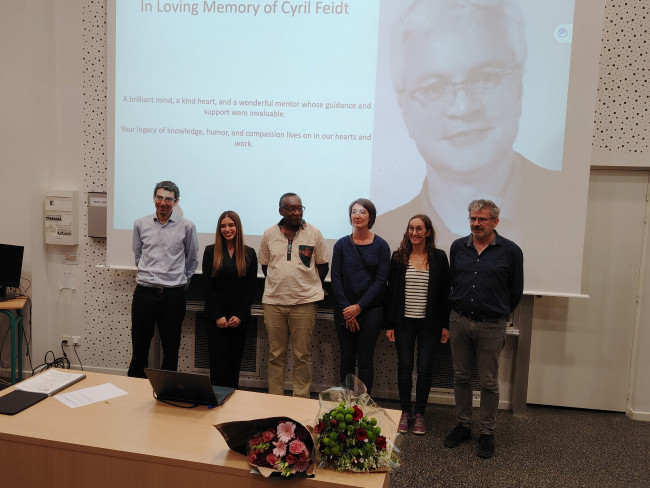Perla Alnajjar's thesis defence
Published on 21/05/2024
On Tuesday 4 June at 2pm in the Cuénot lecture hall at ENSAIA, Perla Alnajjar will defend her thesis entitled ‘Study and modelling of the fate of a persistent organic pollutant, chlordecone, through methanisation’, produced by the L2A and Genoscope laboratories and co-supervised with the University of Lebanon.
For those unable to attend in person, it will be possible to follow the presentation online via the following link: https://webvisio.univ-lorraine.fr/meeting/5133?secret=aabc343b-5c49-4d05-8c2f-3696d70241cf
Thesis supervisors :
Cyril Feidt, Professor, Univ. Lorraine, L2A (Nancy)
Yves Le Roux, Professor, Univ. Lorraine, L2A (Nancy)
Thesis supervisor :
Pierre-Loïc Saaidi, Senior Lecturer, Univ. Paris Saclay, Genoscope (Evry)
Thesis co-supervisor :
Moomen Baroudi, Professor, Lebanese University, Water and Environment Laboratory (Tripoli)
Members of the jury :
Rapporteur(s) :
Dominique Patureau, Research Director, INRAE-LBE (Narbonne)
Harry Archimède, Research Director, INRAE-ASSET (Antilles-Guyane)
Examiners :
Aurélie Cébron, Research Director, Univ. Lorraine, LIEC (Nancy)
Jennifer Hallal, Research Engineer, BRGM (Orléans)
Hiba Mawlawi, Professor, Lebanese University, EDST-LAB (Tripoli)
Summary of the thesis:
Chlordecone (CLD) is a persistent organic pollutant that was widely used in banana plantations in the French West Indies between 1972 and 1993. This insecticide contaminated a third of agricultural soils and spread to other environmental compartments. As a result, CLD entered the food chain, with adverse effects on the health of the local population.
A decontamination strategy has recently been proposed to ensure the compliance of farm animals prior to slaughter. During the decontamination period, the animals eliminate CLD and its metabolite, chlordecol (CLDOH), mainly through faecal excretion. Proper management of the resulting contaminated effluent is therefore essential.
Methanisation has been studied as a bioremediation strategy for treating contaminated livestock effluent. Several approaches were tested. The first, used as a proof of concept, involved a batch system in which CLD concentrations in artificially contaminated organic waste were monitored after incubation under mesophilic (37.5ºC) and thermophilic (55ºC) conditions. CLD concentrations decreased significantly and various transformation products (TPs) were quantified, indicating efficient degradation of CLD under methanogenic conditions.
Secondly, in order to understand the dynamics of the appearance of PTs and the evolution of CLDOH, these compounds were added to a batch device and their fate was monitored. The results showed a significant decrease in these compounds and an increase in their derivatives.
To validate the operational feasibility of the proposed remediation strategy, animal manure supplemented with CLD was introduced over a long period into a continuous digester. A significant decrease in CLD was observed, accompanied by the appearance of several PTs, proving that CLD can also be degraded under conditions similar to those that can be implemented in the French West Indies.
In conclusion, this work highlights the potential of methanisation, particularly under thermophilic conditions, as a promising technology for treating livestock effluent contaminated by CLD and CLDOH. Studies on the safety of the transformation products formed appear necessary to validate the use of this technique in the field.
Keywords: chlordecone, chlordecol, transformation products, methanisation, degradation, livestock effluents.

